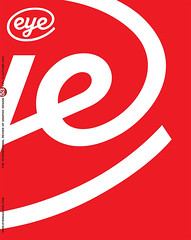Autumn 2004
Dust that never sleeps
Add. 17469: A Little Dust Whispered
Rachel Lichtenstein, British Library, £5.99<br>Artist and writer Rachel Lichtenstein is best known for her book (and personal quest), Rodinsky’s Room (1999), a compelling psycho-geographical tour co-written with author Iain Sinclair. The book investigates the story of David Rodinsky, a caretaker who mysteriously vanished from his attic room at the 19 Princelet Street synagogue in Whitechapel in 1969. Eleven years later, the room was found exactly as he left it: unfinished food on the table, books lying open, an imprint of his head on the pillow. Fascinated, Lichtenstein became artist in residence at the synagogue and catalogued the contents of Rodinsky’s room. She also published a companion piece to Rodinsky’s Room, a guidebook called Rodinsky’s Whitechapel, which follows his footsteps around the once thriving Jewish neighbourhood.
By the time Lichtenstein commenced a two-year creative research fellowship at the British Library, her interest in ‘objects and their personal histories’ had become her impassioned focus. The result of this fellowship is a new book, Add. 17469 (the title both a library catalogue number and Lichtenstein’s birthday). Working with original material dating from the fourth century onwards (ranging from hand-drawn maps to manuscripts perforated with stunning bookworm patterns), Lichtenstein began ‘isolating fragments of text’ and then ‘enlarging them with a magnifying glass,’ allowing these fragments to become ‘beautiful images in their own right, like paintings.’ Much like pursuing Rodinsky’s elusive shadow, Lichtenstein became fascinated with ‘the evidence of human beings beyond the text, marks left by the physical act of writing such as the greasy fingerprints of a medieval monk.’ Whether showing a 1420 astronomical calendar, or a fragment of a 1917 Isaac Rosenberg poem scribbled on the back of an envelope, Lichtenstein describes her interpretations of these images as ‘new translations of the work’. Her aim is to reveal the hidden identities and stories of her findings.
Designed by Mark Diaper of Eggers + Diaper (who also designed Rodinsky’s Whitechapel), this small, intimate book combines blown-up, grainy photographs of the material with notes and text by Lichtenstein, as well as musings from British Library staff, readers and members of the public. Throughout there are also textual disruptions printed in large red type on thin white stock (for example, ‘Every page feels like a layer of earth waiting to be excavated’), which function like visual voiceovers, Lichtenstein again cast as (ephemera) tour guide. Also interspersed are photographs which reveal the book’s own process, revealing research notes and ideas for the book’s design: an added (and unexpected) layer which renders the book itself an object, as open to translation as any explored here by Lichtenstein. We assume her process, finding ourselves searching for meanings, clues, everything seemingly waiting, as Lichtenstein would say, to be ‘excavated’.
By assuming the role of archeologist, historian and curator, Lichtenstein has made Add. 17469 a poignant study of the many other David Rodinskys lurking as visual ghosts within the British Library collection, and in unearthing this archive within an archive, she has once more made the invisible visible.
Anna Gerber, writer, London
First published in Eye no. 53 vol. 14, 2004
Eye is the world’s most beautiful and collectable graphic design journal, published quarterly for professional designers, students and anyone interested in critical, informed writing about graphic design and visual culture. It is available from all good design bookshops and online at the Eye shop, where you can buy subscriptions, back issues and single copies of the latest issue. You can also browse visual samples of recent issues at Eye before You Buy.

